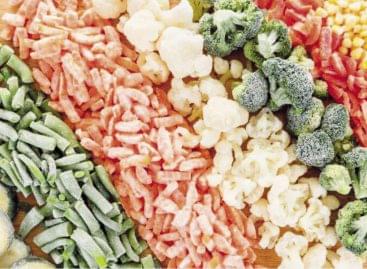Food Packaging Should Have Labels On Front About Health Impact, Says WHO
Packaged food and drinks should have easy-to-read nutritional information on the front of the products to help consumers make healthier choices, according to the first-ever World Health Organisation draft guidelines that stopped short of recommending harsher warning labels.

Increased consumption of processed foods high in salt, sugar and fat is a key driver of a global obesity crisis, with more than a billion people living with the condition and an estimated eight million early deaths every year due to associated health problems like diabetes and heart disease, WHO data shows.
Yet governments have struggled to introduce policies to curb the epidemic. Currently, only 43 WHO member states have any kind of front-of-package labelling either mandatory or voluntary, the UN agency told Reuters, despite evidence showing labels can affect buying behaviour.
The WHO began work on the draft guidelines, which have not been previously reported, in 2019. They aim “to support consumers in making healthier food-related decisions,” Katrin Engelhardt, a scientist in the Nutrition and Food Safety department of the WHO, told Reuters by email.
A public consultation on the guidelines closed on 11 October and the finalised version will be released in early 2025.
‘Interpretive’ Labels
The WHO’s guidance recommends governments implement ‘interpretive’ labels that include nutritional information and some explanation of what that means about the healthiness of a product.
An example would be NutriScore, developed in France and used in a number of European countries, which ranks food from A (green, containing essential nutrients) to E (red, containing high levels of added salts, sugars, fats or calories).
Chile and several other countries in Latin America use a tougher system, with warnings that a food is “high in sugar”, salt or fat on the front of the package, in a black octagon that resembles a stop sign.
Research this summer by Taillie showed Chile’s warning labels, alongside other policies like marketing restrictions to children, meant Chileans bought 37% less sugar, 22% less sodium, 16% less saturated fat and 23% fewer total calories compared to if the law had not been implemented.
ESM
Related news
Tobacco product prices continue to rise – another wave of price increases in retail
🎧 Hallgasd a cikket: Lejátszás Szünet Folytatás Leállítás Nyelv: Auto…
Read more >Broccoli is already in your head, but it’s a long way to the plate
🎧 Hallgasd a cikket: Lejátszás Szünet Folytatás Leállítás Nyelv: Auto…
Read more >Nutri-Score, or the bittersweet energy label of foods
🎧 Hallgasd a cikket: Lejátszás Szünet Folytatás Leállítás Nyelv: Auto…
Read more >Related news
CDs and DVDs are experiencing a renaissance at Vatera, but second-hand LEGO is the real star of this Christmas
🎧 Hallgasd a cikket: Lejátszás Szünet Folytatás Leállítás Nyelv: Auto…
Read more >Christmas tree shopping is also going digital: demand for online ordering is growing rapidly
🎧 Hallgasd a cikket: Lejátszás Szünet Folytatás Leállítás Nyelv: Auto…
Read more >NGM and VOSZ cooperation agreement for the security of digital commerce
🎧 Hallgasd a cikket: Lejátszás Szünet Folytatás Leállítás Nyelv: Auto…
Read more >






